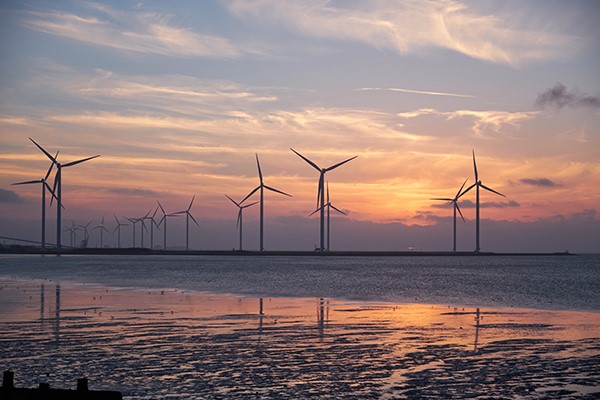Maintaining the balance of power
Published: 05/03/18
Modern society has been designed around fossil fuels, but climate change brings challenges that only renewable sources of energy can overcome. If we are to achieve ambitious government targets and meet the increasing energy demands of a growing population, we need to do more to make renewables effective.
Moving to renewables is easier said than done. Not only have we had to improve the efficiency of non-fuelled renewable energy generation such as solar or wind, but engineers have also had to find solutions to the problem of variable supply; after all, the sun doesn't always shine and the wind doesn't blow every day.
Finding effective solutions
Recently in the US, Southern California Edison (SCE) - a utility that provides electricity to 15 million people - has addressed the problem by increasing its mix of energy sources, developing a solution it calls the Hybrid Electric Gas Turbine, or Hybrid EGT.
When the sun stops shining and the wind drops off, the firm uses small natural gas turbines known as 'peaker plants' located next to the renewable energy generating equipment. However, the major drawback of using the peaker plants as a supply back-up has been the ten minutes required to bring power generation units online, creating a shortfall in energy supply at peak times.
To overcome the break in power production and maintain a constant supply, the SCE's engineers have embraced improvements in battery technology. Working with GE, the SCE engineers paired a 10 MW lithium-ion battery system that can supply the grid with power for up to 30 minutes with a peaker gas turbine. All together, SCE can ensure power is available at all times to their customers whilst pursuing California’s commitment to 50% renewable resources by 2030.
Change resonates throughout the industry
It is solutions like this that will continue to enable our global switch to renewable energy. Of course, the wider mix of sources and sharing of resources between power companies means greater sophistication is needed within the industry as a whole. Versatile accounting and billing systems are needed to deal with the demands of domestic and commercial consumers as the move away from the traditional supply takes place.
More countries are seeing a shift in customer culture towards energy transparency; a rise in consumers actively seeking more information from their suppliers on how bills are itemised, what tariffs are available to them and where their energy comes from.
In the UK, the energy regulator Ofgem has lead a drive to improve the trust and transparency on tariffs. As a result, consumer surveys suggest that the consumers switching from the six largest energy suppliers are looking for benefits other than lower prices.
Among the top ten highest ranked suppliers in Which’s latest energy supplier survey were companies seeking customer trust and engagement by offering tariffs with different levels of green energy; cheaper buying options when the grid is overloaded with renewable energy; and breakdowns of energy sources. Tracking and reporting this information to consumers is crucial for their retention, something that good billing design and management can provide.
As the power generation sector continues its evolution towards renewables, it is crucial that utility billing partners like Jendev maintain their focus on innovation to accommodate this changing landscape. By doing so, we enable power supply companies to continue providing the highest levels of service to their customers.
B a c k t o K n o w l e d g e
